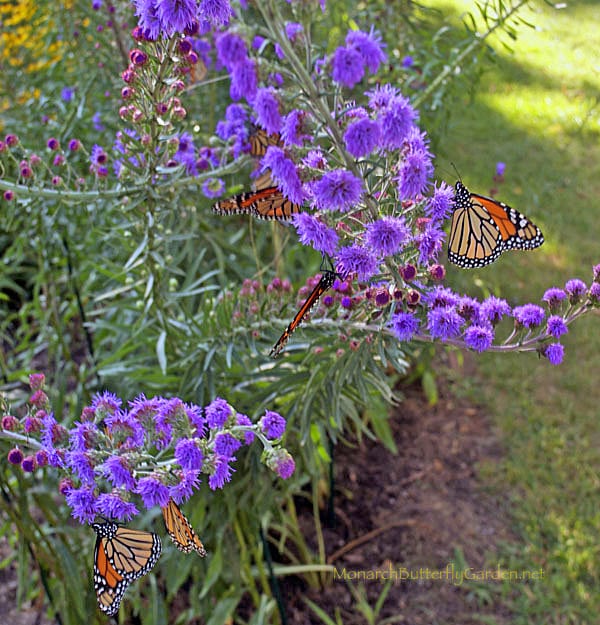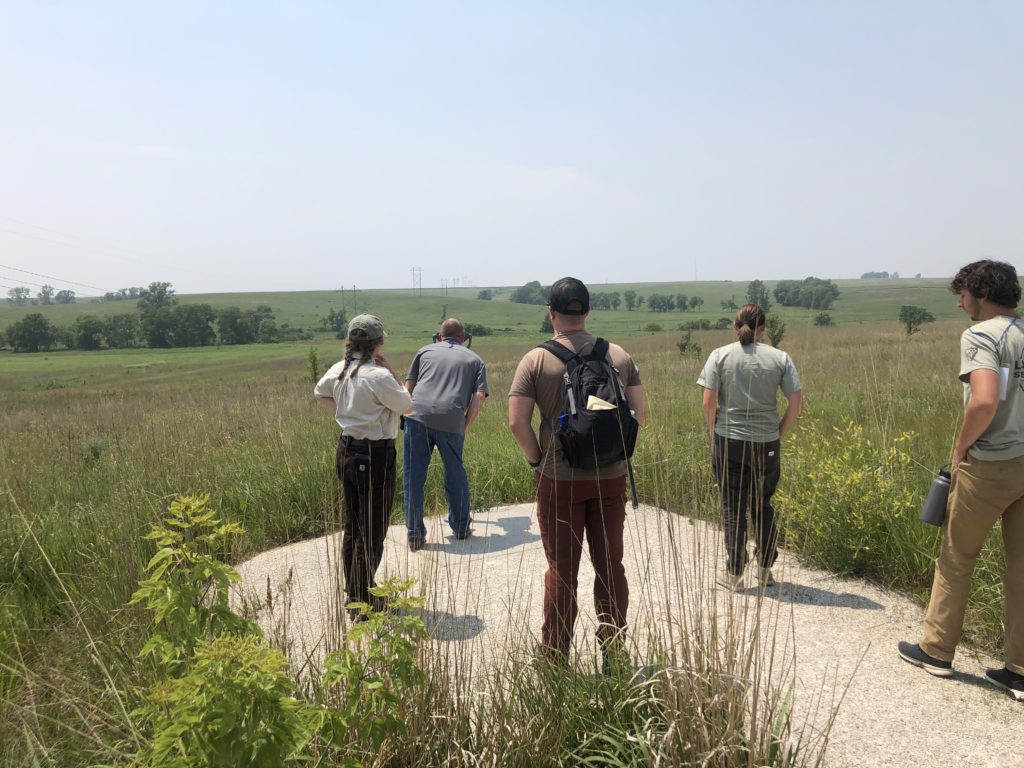The tallgrass prairie once covered 170 million acres, and at the 2023 North American Prairie Conference, I was reminded of that continental scale. Between assisting presenters with technology, I heard sessions about protecting orchids in the aspen-prairie parkland of Manitoba, time lapse photography along the Platte River in Nebraska, surveying insects in Alabama’s “Black Belt”, restoring spring wildflowers on the Kankakee Sands of Indiana, and building out the native seed supply chain in South Dakota, as well as lots of good information from friends and colleagues in Iowa. The following are a few insights I picked up from the conference, written from a butterfly’s perspective.
Hi, I’m a monarch butterfly (Danaus plexippus). Like the meadowlark, I continued to thrive in Iowa long after the prairie was broken. For me, the tipping point was when GMO soybeans and copious use of herbicides replaced “walking the beans” as a method for weed control. No more milkweed in farm fields! Like the meadowlark, I’m a strong flier and not too picky about my habitat, but I’ve got two pairs of eyes (two compound eyes and two ocelli) so my perspective is a little different!
For me, it’s all about the forbs—broad-leaved herbaceous plants. I know, you can’t have grassland without grasses, but I need milkweeds to feed my caterpillars and nectar-producing flowers to drink. I’m visit whatever flowers are blooming (I’ll even use non-native forage plants like red clover and weeds like musk thistle) but since Dr. Benedict and his students are asking, yes, I do have some favorites. In addition to milkweeds, I’m partial to plants in the sunflower family, which have heads packed with nectar-producing, short tubed flowers that make for easy sipping. At the Central College prairie, compassplant (Silphium laciniatum) is my top choice, but that’s just because you don’t have any meadow blazing star (Liatris ligulostylis). As native plant nurseries and seed producers can attest, we monarchs go nuts for that!
In some remnant prairies, we’ve seen the forbs get crowded out by aggressive grasses like big bluestem and switchgrass. It’s even worse in restored prairies that used too much grass in the seed mix—we see this with older CRP plantings. On the other hand, a seed mix without any native grasses won’t have all the functions of a prairie and won’t hold up well against invasive weeds. In an intact prairie, the big warm-season grasses are important, but they’re kept in check by a combination of fire and grazing—the fire makes the grass green up and then the bison chow down! Hemiparasitic plants like lousewort (Pedicularis lanceolata) and bastard toadflax (Commandra umbellata) also set back the grass by sending a modified root into the grass roots and sucking out their juices. Prairie isn’t just a collection of native plants, it’s a web of relationships!
Few reconstructed prairies have bison or hemiparasitic plants, so check out this NRCS publication for other ideas to increase forb diversity in grass-dominated stands.
If you’re starting from scratch, be sure to use a seed mix like CP25 or CP42 that includes plenty of native flowers. We’re happy to learn that over 600,000 acres in the Conservation Reserve Program (CRP) have been planted with these mixes.
Iowa can be an inhospitable place for an insect, but thanks in large part to the efforts of the Tallgrass Prairie Center at UNI and the Iowa DOT’s Living Roadway Trust Fund, we have a better supply of native seeds than many other states, and many miles of roadside ditches planted to prairie. Next step, find some more room for prairie plantings on farms and in cities!
This article is based on sessions presented by Laura Jackson (University of Northern Iowa), Tom Rosburg (Drake University), Russell Benedict (Central College), Justin Meissen (University of Northern Iowa), Brian Wilsey (Iowa State University), and James Cronin (USDA-NRCS).



